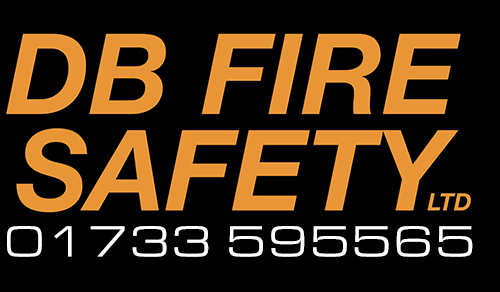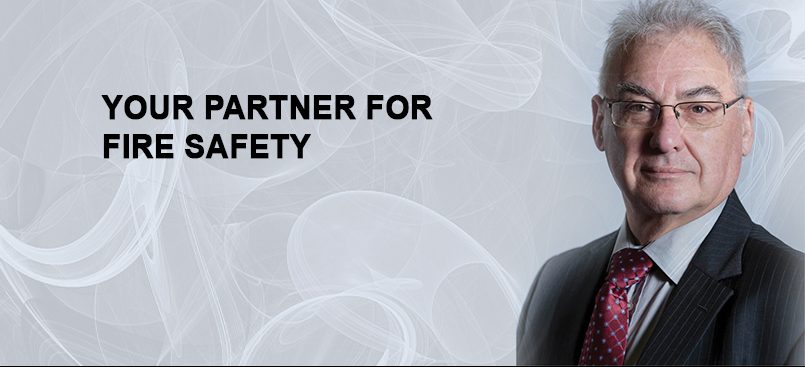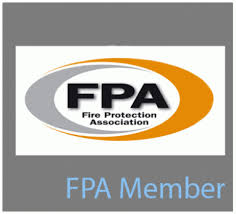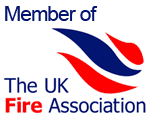DB Fire Safety Ltd are involved in carrying out the fire risk assessment on a multi-storey building in Peterborough that’s recently been converted from offices into flats.
Fire safety design in new blocks of flats is governed
by the Building Regulations 2010. This legislation requires that landlords carry out fire risk assessments in all common areas of properties which will identify any fire hazards and who could be potentially at risk.
Blocks of flats differ from other residential dwellings in respect of fire risk assessments. Because there are more people living in a block of flats, they will experience more fires than people living in houses. However, a fire in a block of flats is no more dangerous than in a house. High rise, therefore, does not mean high risk.
• To keep fire risk to a minimum, it is just as important to prevent fires as to provide
measures to protect people when fire occurs.
• The most significant influences on fire risk are social and lifestyle factors and advanced
age, not the type of dwelling in which people live.
• All dwellings should have working smoke alarms.
• Very few people die as a result of a fire in a neighbour’s flat or the common parts. Nearly all
fire deaths occur in the flat in which fire starts.
• In blocks of flats, each flat is designed to be a fire-resisting ‘box’. It is important to maintain
the integrity of this compartment, particularly when building work and alterations take place.
• It is important to ensure that fires cannot start in the common parts or common facilities.
Given that most fires occur in domestic dwellings, it was recognised
that a block of flats as a building containing many such dwellings –
has the potential for a higher risk to people should a fire break out.
Accordingly, the fire safety standards that were developed to address
this risk sought to afford the same level of safety found in houses to
those living in blocks of flats.
At the very least you should ensure that there is an adequate means
of escape in case of fire, and landlords of shared and Houses in
Multiple Occupation (HMO) properties will have additional obligations,
both under the Regulatory Reform (Fire Safety) Order (2005) and the
Housing Act 2004.
Just like employers, landlords have certain obligations when it comes
to fire safety and protection in their properties. However, it is not as
simple as ensuring there is a couple of fire extinguishers to hand – fire
safety largely depends on the potential risks and the different types of
buildings can cause confusion. For example, a building that is used for
a single tenancy will differ to one which is shared across commercial and residential lettings
This is the basis for the ‘stay put’ principle (discussed later in this guide): when a fire
occurs within one dwelling (or, less likely, in the common parts), it is normally safe for
other residents to remain within their own flat. This principle is undoubtedly successful
in an overwhelming number of fires in blocks of flats. In 2009-2010, of over 8,000 fires
in these blocks, only 22 fires necessitated evacuation of more than five people with the
assistance of the fire and rescue service5.
The assessment of risk from fire also needs to take social factors into account,
particularly in the case of accommodation provided specifically for certain highrisk
groups.
While escape within flats is based on similar principles to those for houses, reaching
ultimate safety relies on using the common parts.
• Most blocks of flats are designed on the ‘stay put’ principle. Although this relies on there
being effective compartmentation, it is a principle that should be adopted wherever
possible.
• Provided there is effective compartmentation and means of escape, ‘general needs’ blocks
of flats will not normally require a communal fire alarm system.
• Communal fire alarm systems should not be installed unless it can be demonstrated that
there is no other practicable way of ensuring an adequate level of safety. If such a system
is provided, it must be possible to manage it.
• However, it should not automatically be assumed that constructional standards will be
inadequate in the absence of evidence to that effect.
• Proposals to upgrade fire protection in an existing block should aim to ensure, or restore, a
satisfactory standard of compartmentation in order to maintain the original ‘stay put’ policy.
• More generally, application of current benchmark standards to an existing block of flats is
not normally appropriate.
• Certain developments in fire safety technology and practice (eg smoke alarms within flats)
should be adopted. However, other developments such as automatic suppression systems
will only be appropriate if the cost and effort of adopting them is proportionate to the risk.
Front doors to flats need to be fire-resisting and self-closing.
• Corridors leading to stairways need to be enclosed in fire-resisting construction.
• Where there is only escape in one direction along a corridor, the extent of travel in such
‘dead ends’ needs to be limited.
• Open decks and balconies need to be limited in extent if escape is only possible in one
direction, with fire-resisting construction to protect people passing other flats to reach a
stairway.
• Stairways need to be enclosed in fire-resisting construction, with fire-resisting, selfclosing
doors.
• Any external stairways need to be suitably separated from the building by fire-resisting
construction and doors.
• Any areas, rooms or risers opening onto communal escape corridors and stairways
need to be fitted with fire-resisting doors that are self-closing or kept locked shut.
• Arrangements for maintaining stairways clear of smoke need to be provided (through
means such as openable windows and vents).
• Additional protection is needed where there is only a single stairway for normal access
and for egress in an emergency, normally comprising lobby approach and permanent
openings or automatically opening vents for clearing smoke.
16.11 Older people and people with certain disabilities may require particular consideration
www.local.gov.uk
David Black, the Managing Director of DB Fire Safety Ltd has been involved with this project from its outset, and says that now the building is ready for occupation.
For information on how DB Fire Safety Ltd can help with your fire risk assessment; call 0800 772 0559 OR
Email: enquiries@dbfiresafety.co.uk




